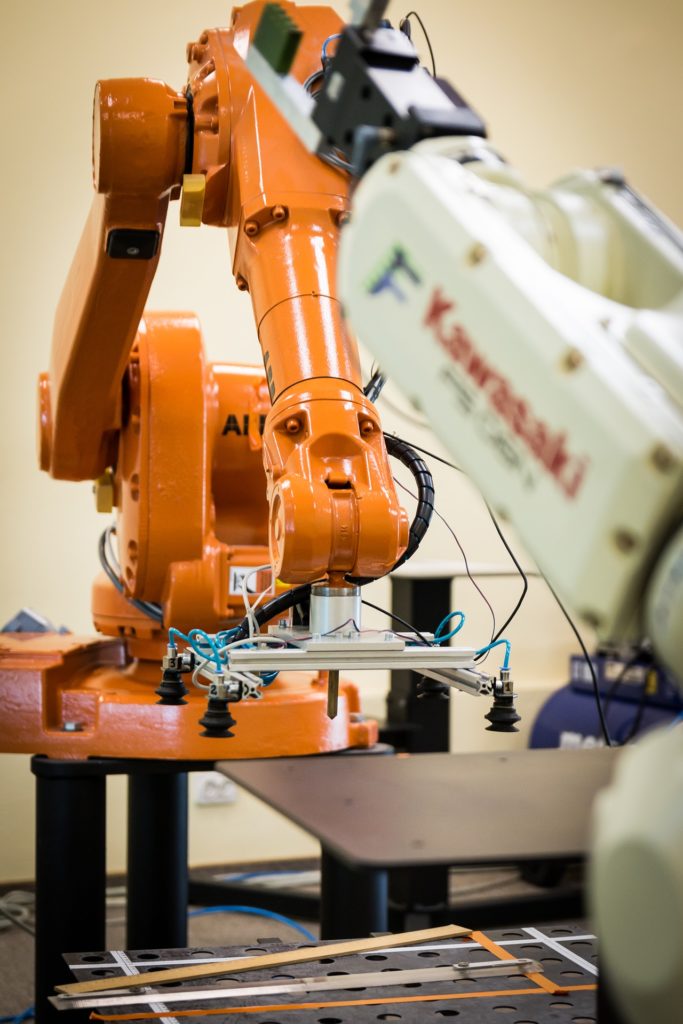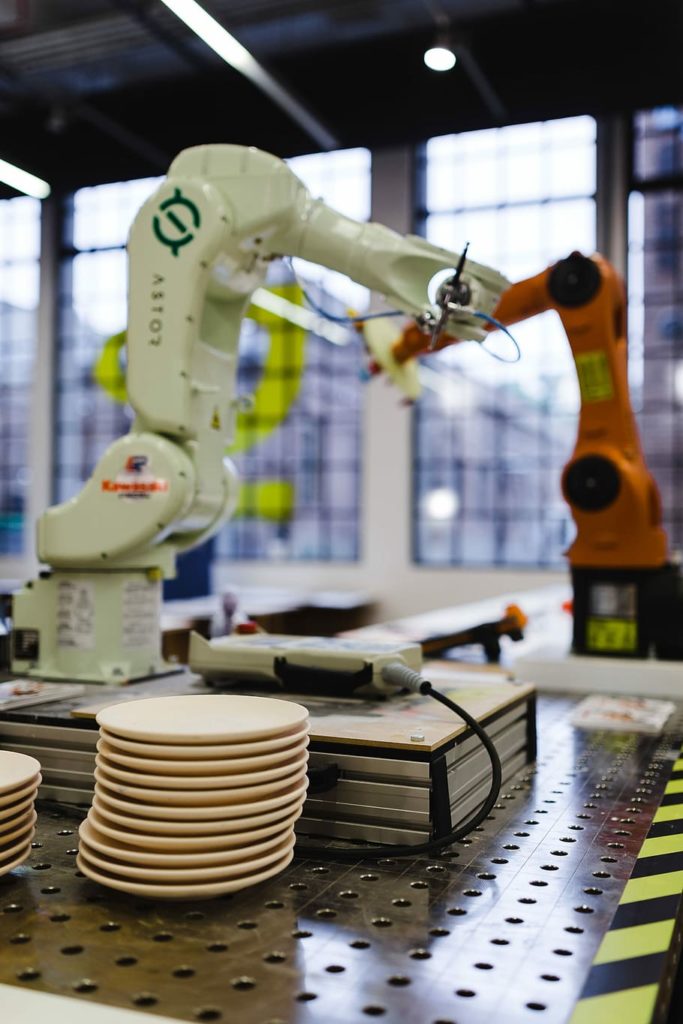Brilliantwms Automated warehouse robots solution can seamlessly integrate with Warehouse Management System. With a system like our customers can get a return on their investment in a matter by capturing these benefits:
- Increase order picking throughout
- Increase inventory density in a warehouse
- Reduce utility costs including lighting and air conditioning
- Reduce fall by limiting human interaction with stock items
- Reduce labor cost
Automated Guided Vehicles and Automated Guided Carts
AGVs and AGCs are two technologies that are often bundled together under the umbrella term of “robotics,” and it’s easy to see why. Both are used to automate vehicle inventory, supplies, and materials from one location to another within your facility, allowing for a more streamlined replenishment process while also freeing up workers to perform higher-value tasks.
How exactly warehouse picking robots navigate a warehouse depends on the specific model employed. Some follow magnetic strips or tracks that are physically laid-out in routes around the facility. Others may come to join these paths with much other advanced technology camera vision, and infrared and other sensors to navigate in a semi-autonomous manner that allows them to avoid obstacles along their predetermined route.

This may be similar in many ways, but AGVs and AGCs do have a number of differences. The biggest of these differences is the fact that AGVs tend to handle much bigger loads than their smaller cart counterparts. Ultimately, robotic warehouse management systems are used to complete work that would typically otherwise be done by a forklift operator (or fleet of operators) within your facility, moving product and materials from one location to the other. While important to your operation, this is relatively low-skill work. By retaining AGVs and AGCs for this transportation, your employees can perform tasks that add more value to your operation.
Autonomous Mobile Robots (AMRs)
- They can navigate around a facility or warehouse without the need for human intervention
- They can be used to transport inventory or materials from one location to another
- They can facilitate a picking strategy
Both made to fulfill the same purpose within your operation, they are built upon very different technologies, which gives them different properties. warehouse picking robots typically operate by following a preset route between locations. These routes are established by laying some sort of physical guide like Magnetic strips, wires, sensors embedded in the floor, etc.

Automated warehouse picking systems, on the other hand, does not rely on such rigid, preset routes. Other than following magnetic strips or wires, robotic inventory management relies on an array of standard onboard sensors, computers, and maps, which allows them to understand and interpret their environment. This gives them greater flexibility to create their own routes between locations within a warehouse or facility, Identifying and Avoiding Obstacles and Rerouting themselves when necessary.
The final result is a robot that is much better and able to deal with the dynamic environment offered by most order fulfillment operations in warehouse management.
Articulated Robotic Arms
Brilliantwms articulated robotic tools are another example of robotic technology that has permeated into the fields of distribution and manufacturing. These automated warehouse picking systems tools are important multi-jointed & big limbs that can be used to lift, move, turn, and otherwise manipulate a range of goods within a warehouse or distribution center.
The Robotic Arm Can Be Put To Use In A Range Of Functions Within An Operation, Including :
Receiving/storage:
As the product arrives at your desk, an articulated arm can be put to use the de-palletizing product and moving it to racks.
Production:
When goods are made in the factory, articulated arms can move heavy product much more easily than workers, and can be used in environments that may otherwise be harmful to human operators.
Picking/Packing:
For operations afflicted with poor labor supply, smaller articulated robotic arms can even be used to perform picking and packing duties that would more traditionally be handled by workers.
Shipping:
These robots can also be used to palletize large orders in the most efficient way Depending on the operation, the robotic inventory management system can play a very important role in reducing labor costs and reducing the impact of labor shortage, impacting everything from receiving to storage to picking, sortation, and packing.

